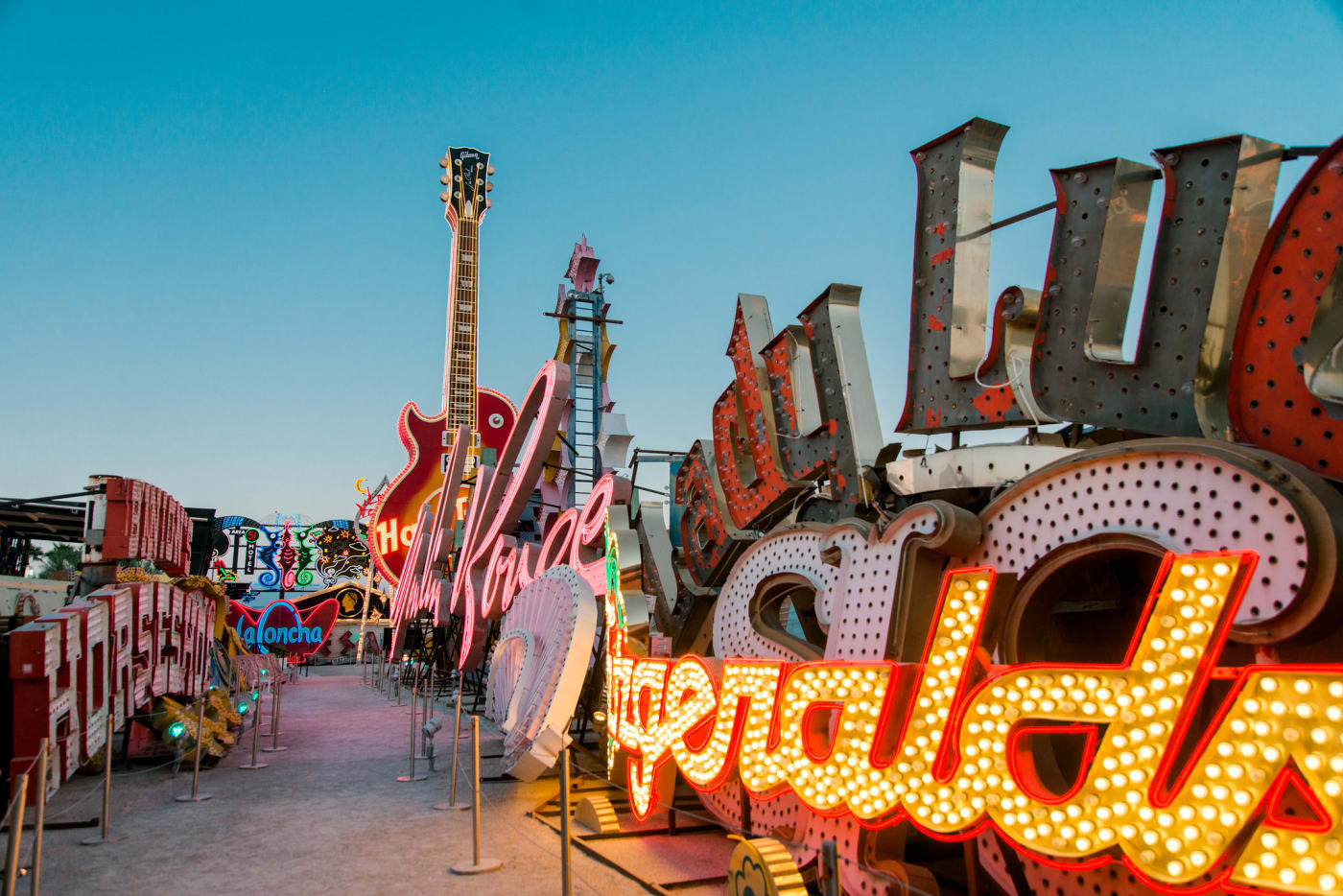Preservation in Action
Back to Neon Sign Restoration Program
The Neon Museum’s signage collection consists of a vibrant mix of materials, from sheet metal and neon to fiberglass, plexiglass, and vinyl applications. Each sign is unique, and its restoration depends on both its condition and era. For signs like the Moulin Rouge and Tropicana, where the neon components remain in great shape, a light-touch conservation approach is used, preserving the original neon while only minimal metalwork or paint is needed.
Restoration decisions are prioritized by the preservation status of the sign and its historical significance.

Hartlauer testing neon tubing in the Tropicana sign
The restoration process kicks off with a thorough assessment of the sign’s condition and an in-depth dive into its history. This includes studying old photographs, videos, technical drawings, and renderings to uncover every detail about the sign’s original design.

Technical drawing of the Stardust sign in Futura font. The Neon Museum Photograph Collection, 2006
Once funding is secured, the Collections Team coordinates the removal of the sign with the help of a sign company. This involves carefully moving the pieces using cranes and flatbed trucks. Once the sign reaches the workshop, the team works alongside experts to assess whether any metalwork is required and if any structural support needs to be built. For larger signs like the Flamingo and Hard Rock Café, engineering solutions such as concrete footings with rebar are needed for stability—sometimes digging up to 20 feet into the ground.

With historic research completed and metalwork underway, the next step is all about matching the sign’s original paint, lightbulbs, and neon. If any animation patterns were part of the sign’s design, these are recreated to ensure the sign’s original charm is fully restored. Once these elements are confirmed by the Museum’s team, the heavy lifting of restoration begins.
Depending on the paint’s condition, remediation might be necessary before repainting. Then, stencils are made for the neon benders, who skillfully shape the neon glass by hand. Once the neon is ready and the lightbulbs are added, the sign is rewired and calibrated to ensure its animations work just as they did in the past.




Meanwhile, back at the Museum, electrical trenching and conduit installations are underway at the site where the sign will be installed. If any new footings are needed, they are created before the sign is transported back to the Museum. Due to their size, some signs must be moved in portions, such as the Hard Rock sign being transported in 6 pieces. Also depending on the size of the sign, it determines what time of day it will be moved. The timing of these moves is critical, with transportation taking place at specific times to avoid traffic and ensure safety.

Electrical Trenching and concrete footings are being added for the Flamingo sign
Once everything is in place, the sign undergoes a final round of testing to ensure it operates perfectly before it’s unveiled to the public, glowing brightly once again as a piece of history.
